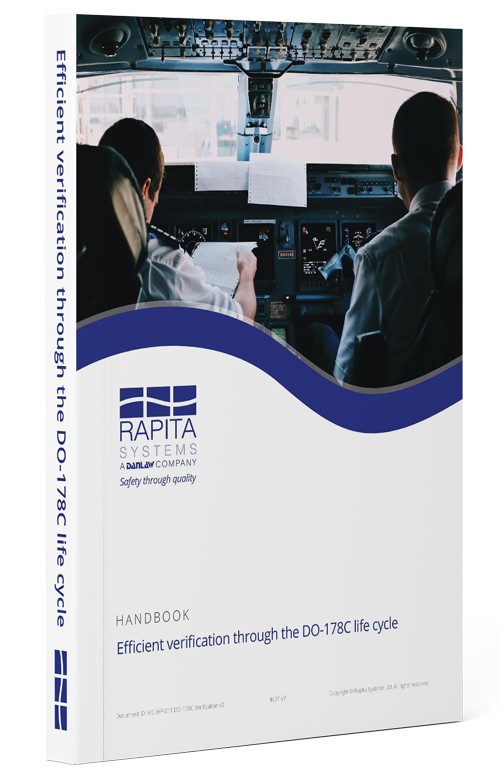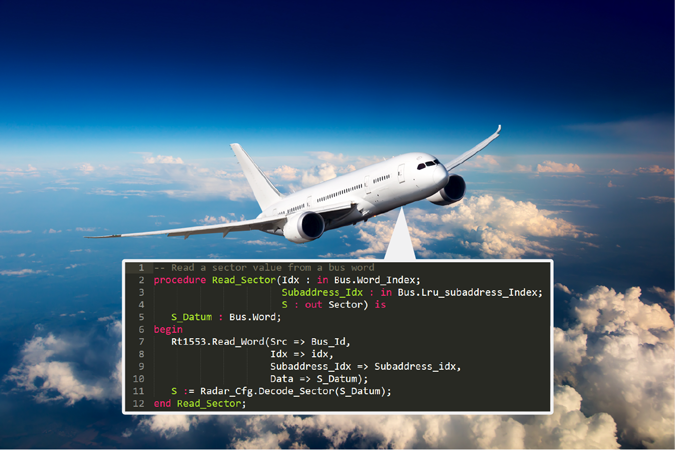What is Aerospace Software Testing?
From the fasten seatbelt sign to the flight control unit, software can be found almost everywhere in avionics systems.
To ensure the safety of passengers, crew, and the aircraft, aerospace software applications must be vigorously tested within strict guidelines to ensure that they operate correctly. Failure of onboard critical software (safety-critical and/or mission critical) could have far-reaching repercussions.
Avionics systems often comprise many thousands of functions and millions of lines of code. To ensure safety of the system, these must be tested to make sure that they operate as expected. Activities used to test avionics systems include:
- Functional testing to ensure that the software meets high- and low-level requirements.
- Worst-case execution time analysis to ensure that time-critical sections of code meet timing deadlines
- Structural coverage analysis to ensure that structural elements of the code (such as statements) have been tested to an acceptable degree
Aerospace software testing solutions
What is DO-178?
When approving commercial software-based aerospace systems, certification authorities such as the EASA and FAA refer to the DO-178C Software Considerations in Airborne Systems and Equipment Certification guideline, which ensures that safety-critical software used in airborne systems is safe to use.
According to AC 20-115, DO-178C is recognized as an "acceptable means, but not the only means, for showing compliance with the applicable airworthiness regulations for the software aspects of airborne systems and equipment certification."
This guideline superseded its predecessor, DO-178B, in 2012.

What are software levels?
A system’s Design Assurance Level (DAL) (also known as Item Development Assurance Level or IDAL) derives from hazard analysis and the safety assessment process. Software is categorized into a DAL based on the impact of a failure condition in the system on the passengers, crew, and aircraft.
|
Level |
Failure condition |
|---|---|
|
A |
Catastrophic |
|
B |
Hazardous |
|
C |
Major |
|
D |
Minor |
|
E |
No safety effects |


 Rapita System Announces New Distribution Partnership with COONTEC
Rapita System Announces New Distribution Partnership with COONTEC
 Rapita partners with Asterios Technologies to deliver solutions in multicore certification
Rapita partners with Asterios Technologies to deliver solutions in multicore certification
 SAIF Autonomy to use RVS to verify their groundbreaking AI platform
SAIF Autonomy to use RVS to verify their groundbreaking AI platform
 RVS gets a new timing analysis engine
RVS gets a new timing analysis engine
 How to measure stack usage through stack painting with RapiTest
How to measure stack usage through stack painting with RapiTest
 What does AMACC Rev B mean for multicore certification?
What does AMACC Rev B mean for multicore certification?
 How emulation can reduce avionics verification costs: Sim68020
How emulation can reduce avionics verification costs: Sim68020
 How to achieve multicore DO-178C certification with Rapita Systems
How to achieve multicore DO-178C certification with Rapita Systems
 How to achieve DO-178C certification with Rapita Systems
How to achieve DO-178C certification with Rapita Systems
 Certifying Unmanned Aircraft Systems
Certifying Unmanned Aircraft Systems
 DO-278A Guidance: Introduction to RTCA DO-278 approval
DO-278A Guidance: Introduction to RTCA DO-278 approval
 Avionics Certification Q&A: CERT TALK (with Consunova and Visure)
Avionics Certification Q&A: CERT TALK (with Consunova and Visure)











